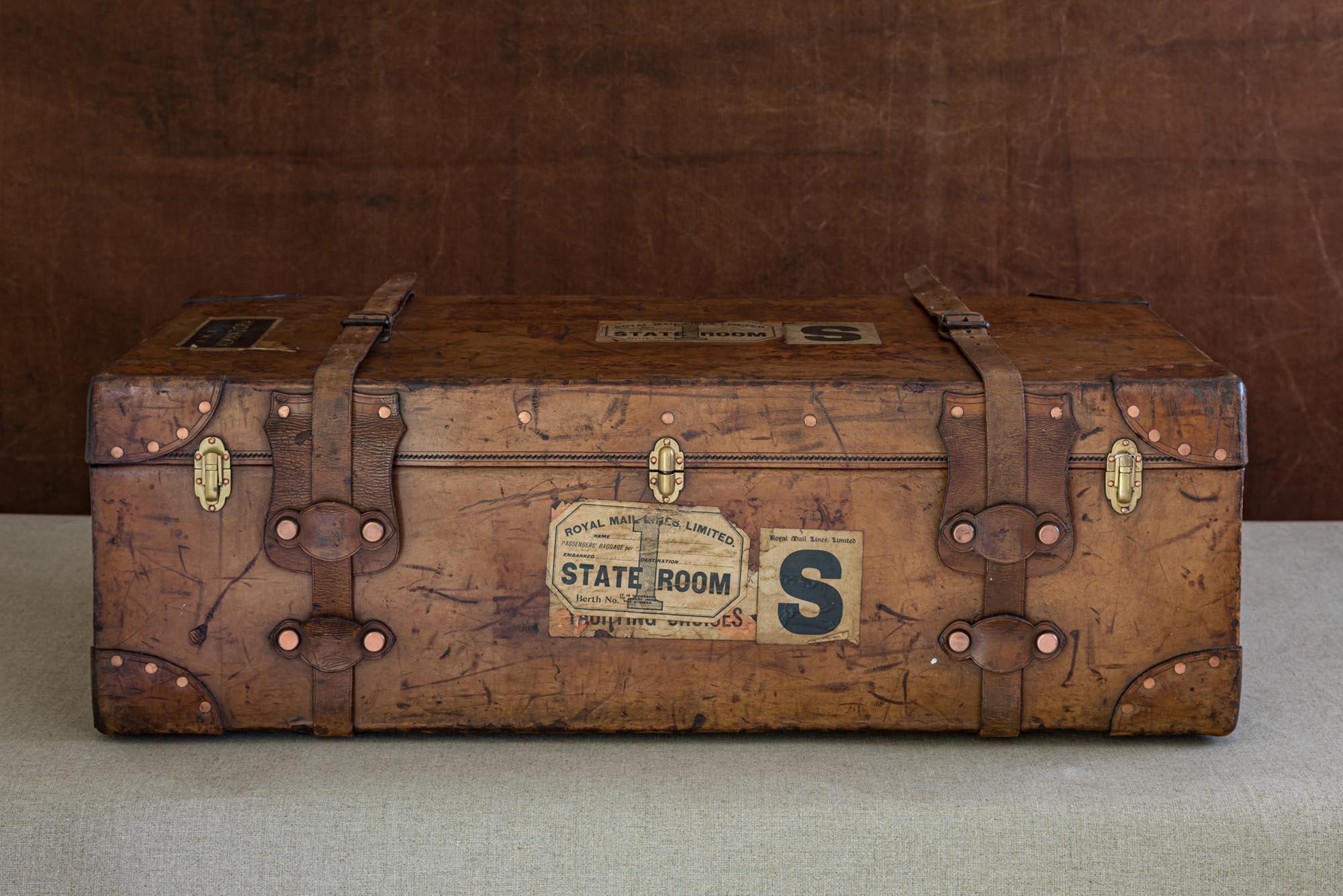
Words by Rory FH Smith
Photography © Bentleys, Paul Read
Curiosity is a marvellous thing. Ever since our earliest ancestors roamed the land in search of sustenance, the human race has longed to know what lay beyond the horizon. While that fundamental desire hasn’t changed since time began, how and why we travel most certainly has.
Over the centuries, curiosity has encouraged countless civilisations to explore and chart every corner of the world – carrying with them their prized possessions in the process. Whether it’s Tutankhamun or the Kardashians, luggage has proved to be the essential ingredient to any successful trip throughout the ages and, more often than not, leather has been at the heart of it.
Thankfully, in the 3,000 years that separate the Egyptian Pharaoh from the Hollywood phenomenon, the concept of luggage has evolved. While Tutankhamun’s travel chest was an ornate wooden carcass, complete with a pitched top and plenty of hieroglyphics, Kim Kardashian has often been photographed with a simple soft leather Louis Vuitton Keepall. While the contrast couldn’t be clearer, it perfectly encapsulates the long evolution of luggage – a story that’s synonymous with changes in transportation.
Despite its ancient origins, it wasn’t really until the Medieval period that the concept of what we would recognise as a classic travel trunk emerged. Back then, travel was long and arduous. Roads were rutted and primitive carriages had limited carrying capacity, with luggage strapped to the exterior and exposed to the elements. Treacherous overseas journeys were measured in weeks, months and years – not days – and luggage was required to stand up to torturous temperatures and conditions. Sturdy wooden chests, reinforced with metal and rounded tops to allow the water to run off were the travel companion of choice.
By the early 1800s, transport technology was gearing up and in 1825, a chap called George Stephenson opened the first public steam railway between Stockton and Darlington. While it was far from luxurious with its primitive engine that spat steam and smut into the passenger carriage behind, the development was nothing short of revolutionary. “The move from horse-drawn carriages to trains changed luggage forever,” says Tim Bent, trunk connoisseur and owner of Bentleys antique shop, London. By 1869, the first transcontinental railway had been completed in the USA, stretching nearly 2,000 miles between Iowa, Nebraska and California. The line reduced the travel time across the West from about six months by wagon, or 25 days by stagecoach, to just four days by train. The age of long-distance travel had arrived, giving rise to a new breed of luggage makers.
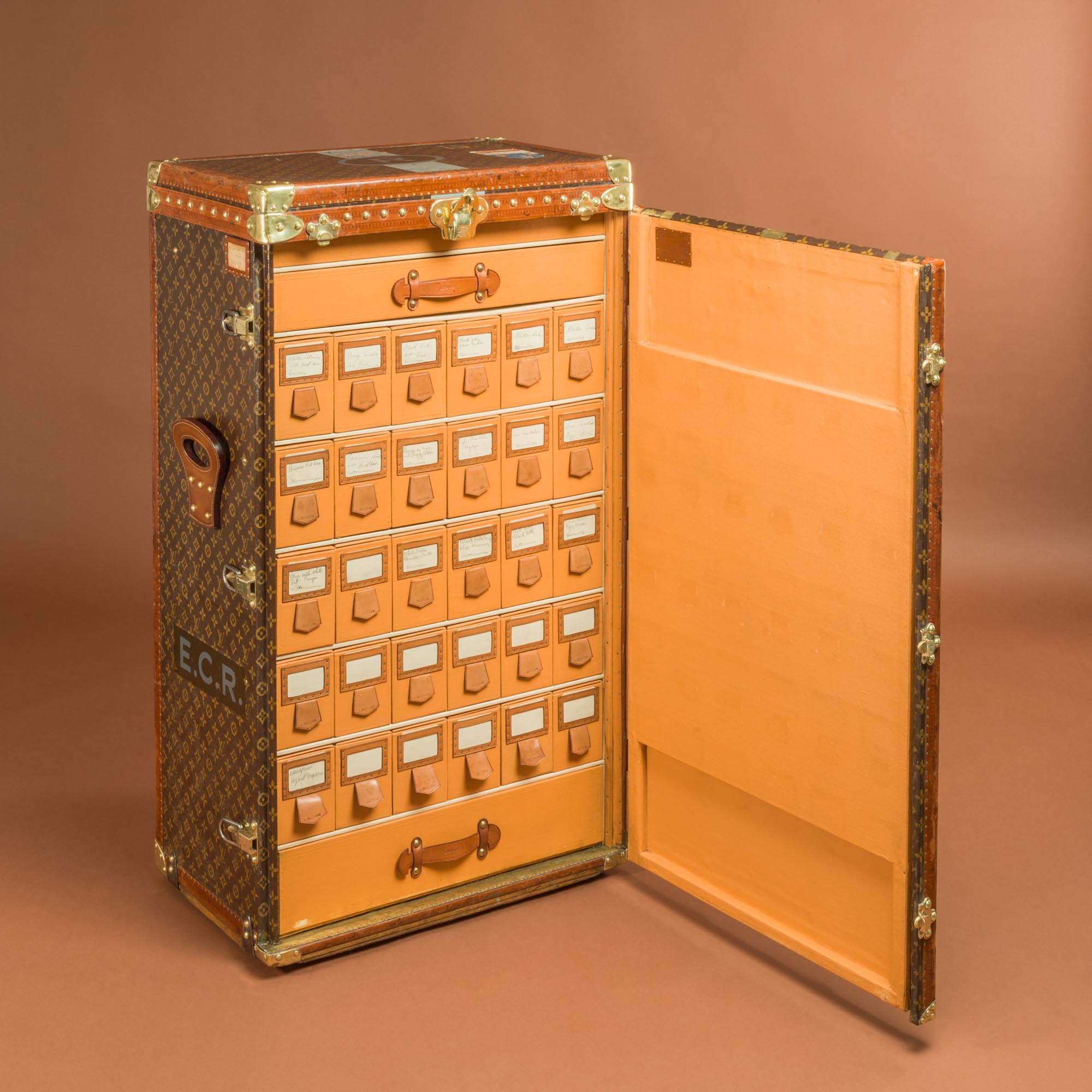
“There were trunk makers in the 18th and 19th century, but they tended to be making wooden carcasses and then covering them in quite a thin leather, just to waterproof it,” says Bent. “The Louis Vuitton style of a canvas-covered flat top trunk didn’t arrive until the middle of the 19th century.”
Started in 1854 by an enterprising young emballeur from Paris by the name of Louis Vuitton, his eponymous company would go on to make some of the greatest leather-bound trunks in the world. Alongside French luggage maker Goyard, established in 1792, English luggage maker John Pound (1823), Moynat (1849) and Bavarian maker Hartmann, founded in 1877, this new group of leading luggage makers were catering to an up-and-coming market of wealthy and, crucially, mobile elite.
The trend for travel was furthered more in the early 1900s when ocean-going steam liners made an effort to appeal to tourists and those looking to travel transatlantic for pleasure. Shipping companies like P&O, Cunard, White Star Line, Hamburg America and Norddeutscher Lloyd competed to build the biggest, fastest and most luxurious ships, all in a bid to attract more ocean-going customers. With that, another change in luggage was ushered in with craftsmen like Vuitton creating the classic cabin trunk, which stood around 13 inches high – the perfect height to fit under the bed within the cabin of a steamship. Added to that, the top was made flat, meaning the trunks could be stacked in the hold on voyages. While simple, innovations like this saw trunk makers blossom in the early 20th century, with wealthy travellers competing to have the latest and greatest baggage to accompany their adventures. “Luggage always adapted to suit the new means of transport – people were very proud of their luggage back then,” says Bent. “Today, we look at luggage as a purely practical thing that we think is going to be destroyed every time you go on a flight, but in those early days, the porters who were in charge of the luggage on a train or steamship knew how to handle it. There wasn’t that fear that your luggage was going to be destroyed by being mishandled.”
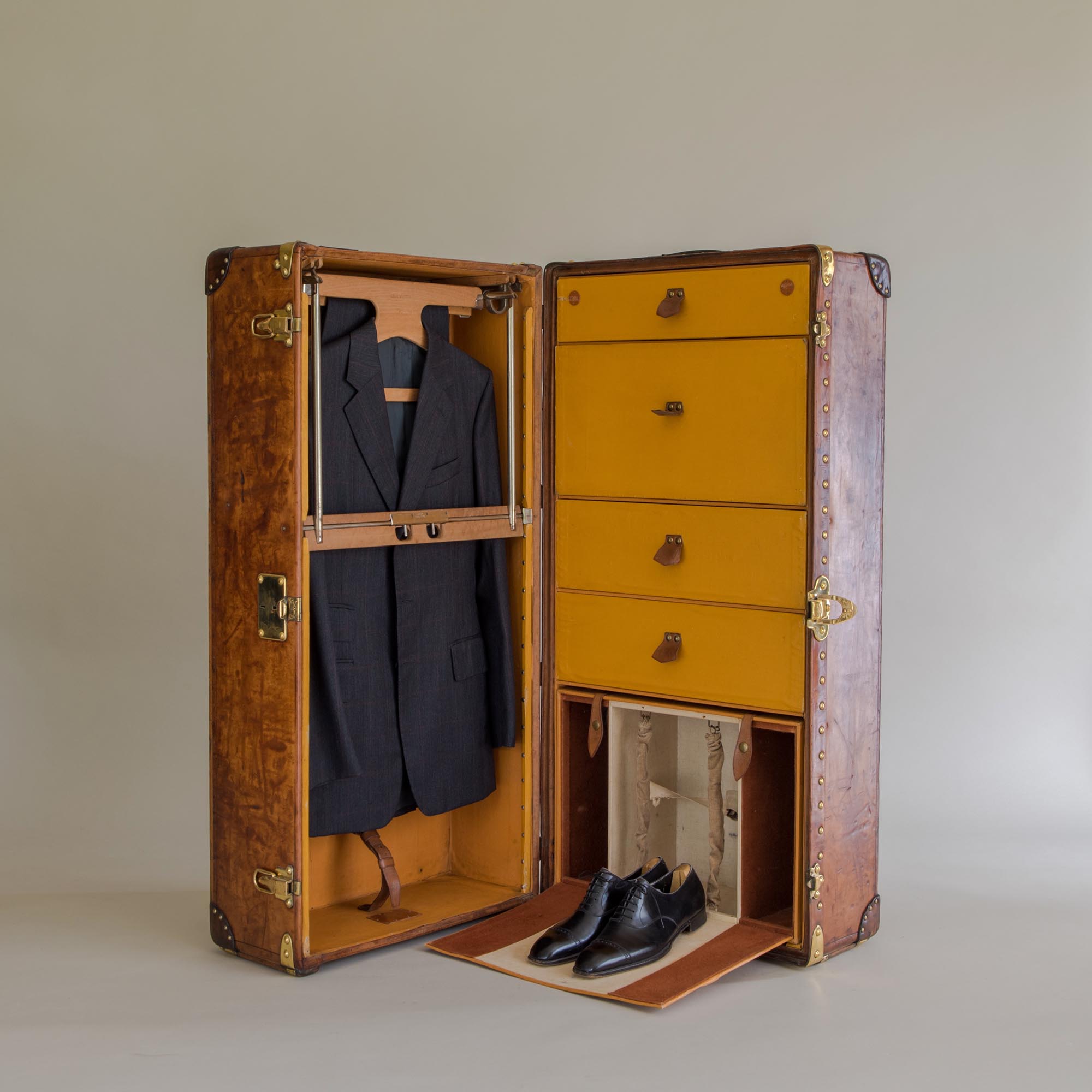
For those fortunate enough to travel transatlantic, trunks containing possessions would have gone into the hold, while smaller trunks and suitcases would have gone into the cabin to accompany you on the journey. It was during this age of great wealth, excess and exuberance that the trend for highly personalised and decorative luggage came about. The leather, originally used to weatherproof the cases, became a creative canvas, upon which craftsmen would apply patterns and pigments, giving way to iconic designs, such as Louis Vuitton’s monogram print or Damier canvas. “There wasn’t so much a need for them to be decorative and beautiful but there was certainly pride in your travelling goods, which is something that’s continued to this day,” explains Bent.
Creating these highly bespoke cases were a considerable undertaking and required specialists for every process and part of their construction. There was the making the plywood box, which was then covered either in canvas or in leather. Then there was the creation of the brass fittings, rivets, leather straps and belts that would be attached before the case was lined. “It’s rather like a suit,” says Bent. “Depending on how intricate or bespoke, some people might have been waiting a year to receive a specially commissioned case or trunk.”
With the travelling classes keen to outdo each other on the absurdity and eccentricity of their luggage, the period allowed characters like the Duke and Duchess of Windsor to indulge in their penchant for possessions, with their luggage soon becoming a talking point on transatlantic crossings. “Normally they crossed with about 30 pieces, other reports said as many as 95, even 98 pieces – mostly big, old fashioned Louis Vuitton wardrobe trunks,” remembered Ed Macy, the baggage master for the S.S. United States.
Further afield, the Maharaja of Jammu and Kashmir famously had a fishing trunk made for him, with which he could travel with all of his rods and reels, while Sir Arthur Conan Doyle commissioned a writing trunk from Goyard, for use while on overseas adventures. The case came complete with a bookcase, typewriter, and a hidden storage space for the manuscripts he was still working on. With the ocean liners providing a backdrop to the elite, at-sea social scene, it wasn’t long before Vogue magazine took an interest in luggage. “The steamer trunk, if packed carefully and practically, holds all that any woman need require for the voyage to Europe,” stated the magazine in 1911. “Since crossing to the other side has become an everyday affair, the question of what to take on the voyage has become a practical science – not a guesswork proposition.”
“There wasn’t so much a need for them to be decorative and beautiful but there was certainly pride in your travelling goods, which is something that’s continued to this day.”
While this golden age of excess and newfound exploration created some of the greatest leather luggage to date, the approach of war in the early 1900s and again in the middle of the 20th century would change the shape of luggage once again. In the inter-war years, travel was no longer confined to trains and transatlantic steamships. The rise of the automobile and civilian airliners threatened the trunk’s existence, with new, lighter luggage coming in fast. “When aviation became open to civilian travel, you started to see a move from trunks to suitcases,” says Bent. “With that, people’s wardrobes changed too – people started travelling lighter, with lighter material clothes but also less luggage.”
With huge flying boats and early airliners making global travel a reality, there was a limit on the amount of luggage one could carry with them and, crucially, there was a need for it to be light. On the road, automakers were fixated with speed and the age gave way to fleets of streamlined sportscars and saloons that were more capable of navigating their way across countries on new road networks. Famous French carmaker Ettore Bugatti, made some of the world’s finest cars, with Goyard making two custom trunks, specifically made to fit into a Bugatti Type 46. The cases had the chassis number displayed on each and their unique shape was created to match the form of the car.
“After the Second World War, the British luggage industry changed significantly,” says Bent. “Leather was very heavily taxed as a luxury material and there was also the post-war recession.” Increasingly, heavy trunks were switched out for lighter, canvas suitcases that could be carried on a plane or stashed in the boot of a car. The advent of jet age in the 1950s and 60s increased the popularity and speed of flying, although the ticket prices ensured it remained an elite activity. It wasn’t until the 1990s that low-cost airlines ushered an age of restricted legroom and carefully monitored carry-on baggage. By now, the age of leather-bound trunks had all but disappeared, giving way to ‘squashable’ luggage made of lightweight and stretchy synthetic fibres.
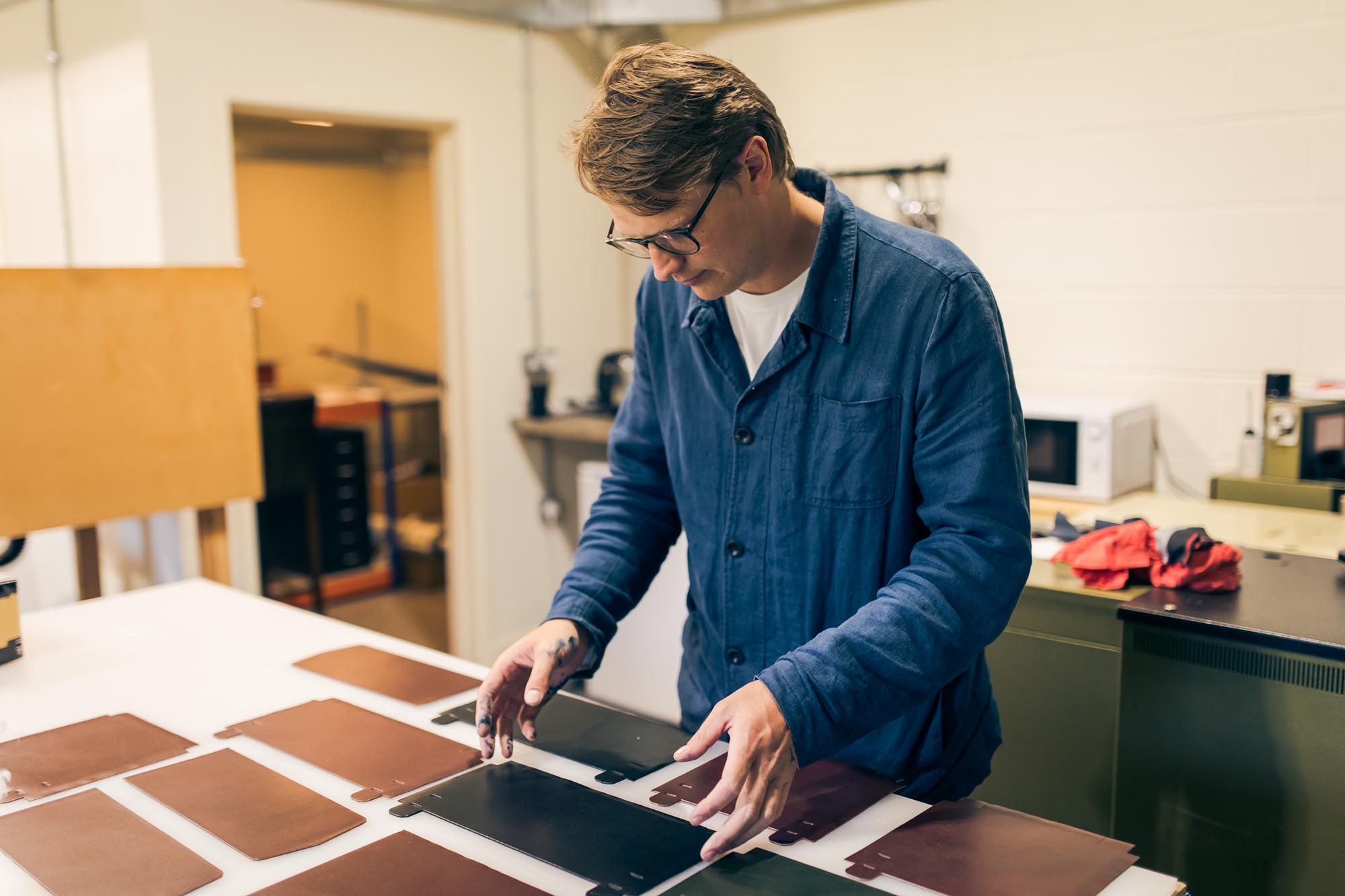
“Today, there’s definitely a desire to have more lightweight and flexible bags – I don’t get asked to make that many hard cases anymore,” says leather craftsman Charles Laurie, founder and owner of Charles Laurie London. After leaving school, Laurie worked with Simpsons London for five years before securing a Leathersellers’ bursary, with which he set up his own studio. Keeping the leather luggage trade alive and well, Laurie is frequently tasked with making the latest lightweight leather luggage, fit for modern means of travel. “Now, the majority of my orders are for soft weekend bags and small, lightweight briefcases or card case. While we’re a small company, making in small quantities, we’re able to focus entirely on the quality of our products,” he adds.
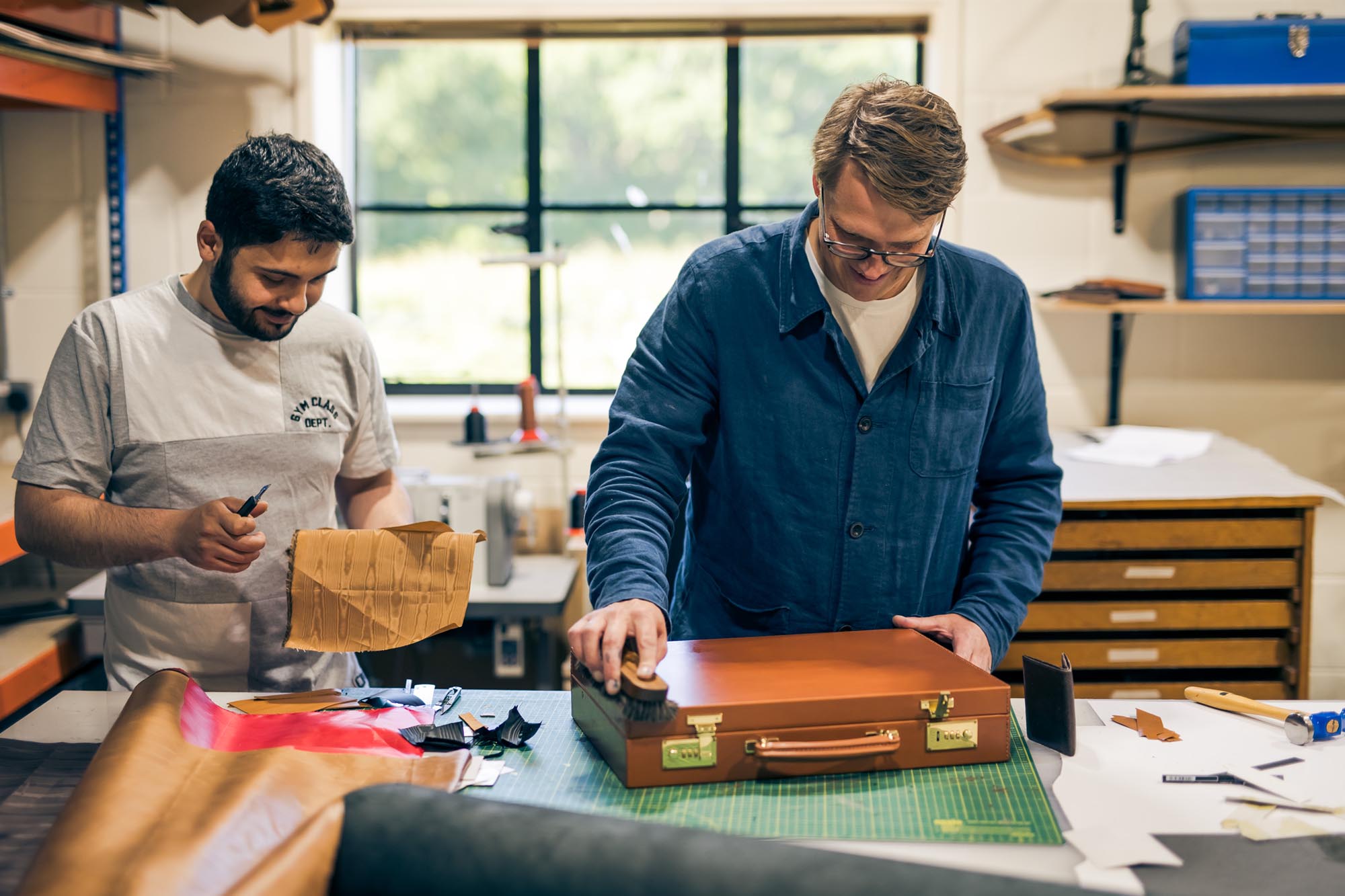
While the days of having someone else take care of your luggage when travelling are rare, if at all, thankfully the much-loved leather trunk has remained with us, albeit mostly as museum or collectors’ pieces – robust reminders of a bygone, golden age of travel, elegance and excess.
Still, leather continues to play an important part in the way we travel, from the interior linings of luxury cars, trains and planes to the carefully crafted cases we choose to take with us on overseas adventures. “Today, it’s important to remind people that the leather we use for luggage and wallets is a by-product of the meat industry, so as long as people keep eating meat, there will always be a material for luxury leather goods,” explains Laurie. With travel levels rebounding back after the Covid-19 pandemic, the demand for well-made and robust luxury leather luggage is on the rise once again. “So long as people are travelling, they’re always going to need to put their clothes in something,” says Laurie. While that might not be in the form of a large, slab-sided trunk, the lasting impact of leather on the wonderful world of luggage looks set to continue well into the future.
Read Next

Breaking Through the Class Ceiling
What can a photographic exhibition at Southampton University teach us about social mobility? Students, staff and alumni share their experiences and contribute to a complex, intersectional picture of challenges.
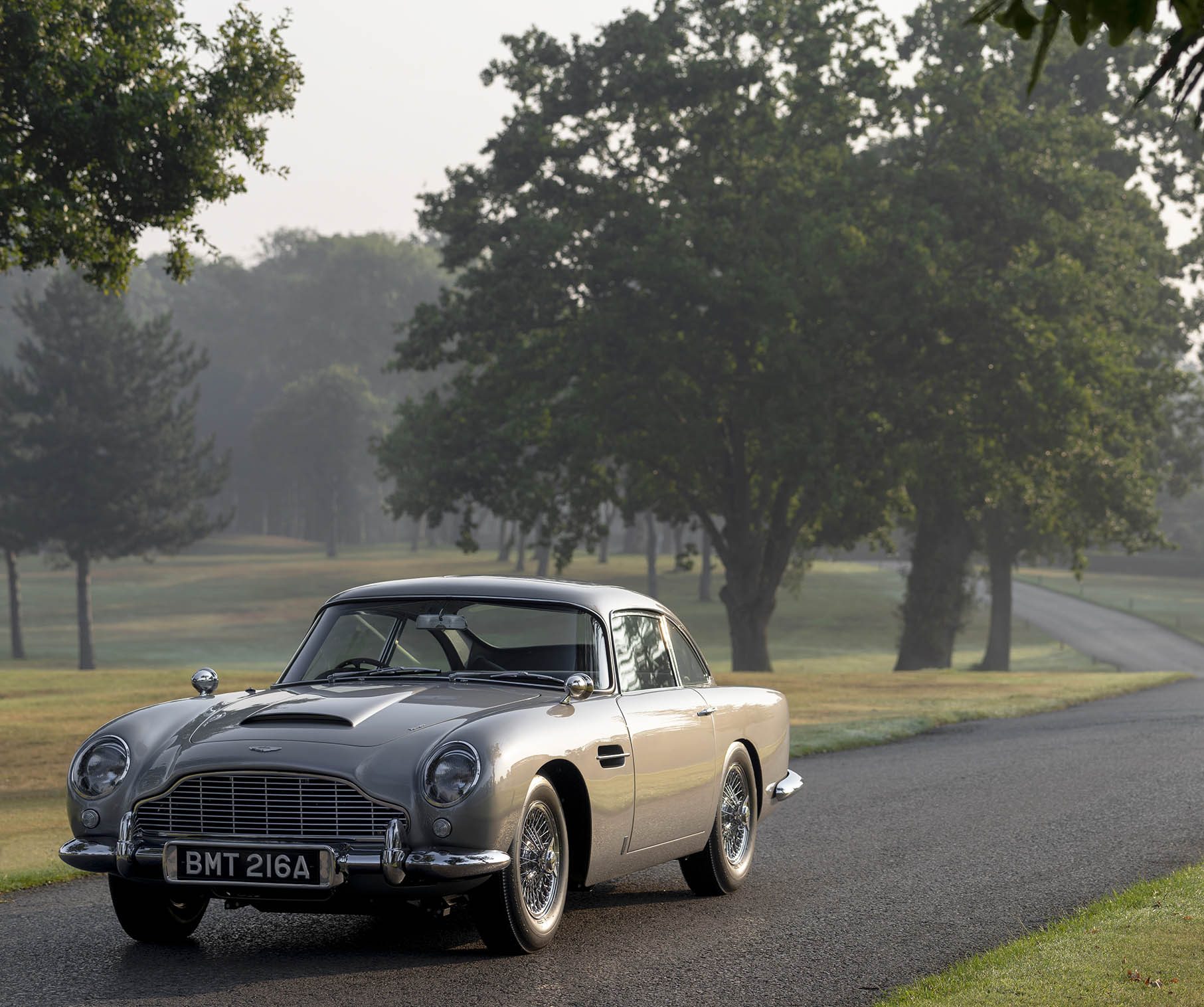
Behind the Wheel
Cars and leather have gone together since the birth of the automobile and, though the industry is pivoting towards electric vehicles, it remains convinced of the sustainability, luxury, and durability of genuine hide interiors.

The Embers of Shoemaking in East London
East London shoemakers are rekindling embers of the area's historic craft. Elisa Anniss meets the artisans making it happen.